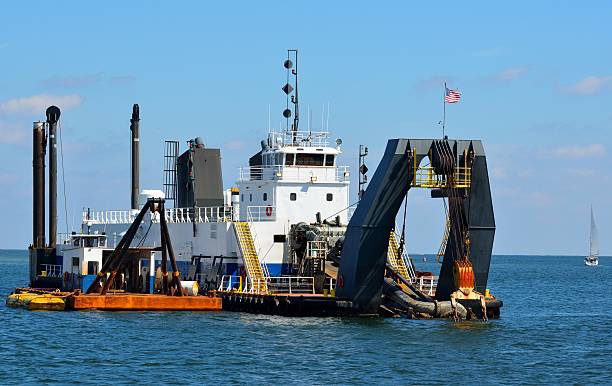
Dredgers are important machines used for excavation and land reclamation in water bodies. They come in different shapes, sizes, and types, depending on the specific purpose they are designed for. In this comprehensive guide, we will discuss everything you need to know about dredgers, including their types, uses, and benefits.
What is a dredger?
A dredger is a machine that is used for excavation in water bodies such as lakes, rivers, and seas. It is designed to remove sediment, debris, and other materials from the bottom of water bodies and transfer them to a different location. Dredgers are used for various purposes, including deepening waterways, creating new harbors, and reclaiming land from the sea.
Types of Dredgers:
Uses of Dredgers:
Benefits of Dredgers:
Dredgers are essential machines for excavation and land reclamation in water bodies. They come in different types and sizes, depending on the specific purpose they are designed for. Understanding the basics of dredgers and their uses and benefits can help you make informed decisions about using them for your specific needs.
Maintenance and Safety:
Dredgers require regular maintenance to ensure they are operating efficiently and safely. Regular inspections of the hull, pumps, engines, and other components are essential to identify any potential issues before they become major problems. Dredgers should also be cleaned regularly to prevent the buildup of sediment and debris, which can cause blockages and reduce efficiency.
Safety is also a critical concern when operating a dredger. Operators must be properly trained and follow all safety guidelines and protocols to minimize the risk of accidents and injuries. Personal protective equipment such as hard hats, safety glasses, and life jackets should be worn at all times, and all workers should be trained in emergency procedures such as evacuation and rescue.
Environmental Concerns:
Dredging can have environmental impacts, including disrupting habitats, stirring up sediment, and affecting water quality. It is important to carefully consider these impacts and take steps to mitigate them when planning and executing dredging operations.
One way to minimize the impact of dredging on the environment is to use eco-friendly dredgers that are designed to reduce sediment disturbance and minimize the release of pollutants. Another approach is to use sedimentation ponds or other methods to contain and treat sediment before it is released back into the water body.
Regulatory Compliance:
Dredging is subject to various regulations and permits, including those related to water quality, habitat protection, and navigation. It is important to ensure that all necessary permits and approvals are obtained before beginning any dredging operations, and to comply with all applicable regulations and guidelines throughout the process.
Conclusion:
Dredgers are versatile machines that play an essential role in water excavation and land reclamation. They come in different types and sizes, each with its own advantages and limitations. By understanding the basics of dredgers, their uses and benefits, maintenance and safety considerations, environmental concerns, and regulatory compliance, you can make informed decisions about using them for your specific needs. Whether you are deepening a waterway, creating a new harbor, or reclaiming land from the sea, dredging can help you achieve your goals and improve the functionality and value of your property.
Dredgers are important machines used for excavation and land reclamation in water bodies. They come in different shapes, sizes, and types, depending on the specific purpose they are designed for. I....
Pilot boats play a vital role in ensuring the safety and efficiency of maritime transportation. These boats are designed to transport pilots to and from ships that require their expertise in navig....
Self-propelled barges are vessels that are designed to transport large quantities of cargo on inland waterways. These barges are propelled by their own engines, making them highly efficient and cos....
Barge/ Dumb Barge A barge is a flat-bottomed boat that is designed to transport goods or people on inland waterways or near-shore locations. Dumb barges, also known as unpowered barges, are t....